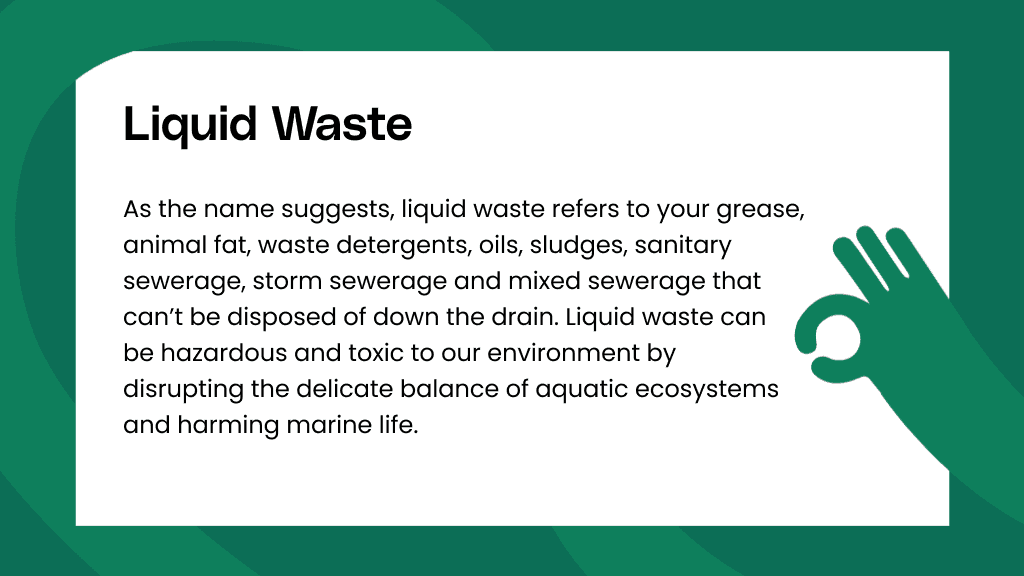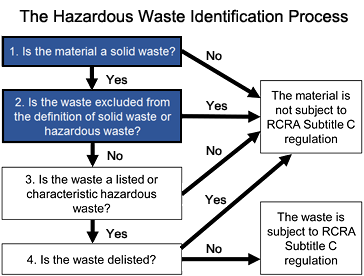Unknown Facts About Reclaim Waste
Unknown Facts About Reclaim Waste
Blog Article
All about Reclaim Waste
Table of ContentsThings about Reclaim WasteThe Facts About Reclaim Waste RevealedThe Facts About Reclaim Waste UncoveredThe 20-Second Trick For Reclaim WasteThe Ultimate Guide To Reclaim Waste
Residential sewage waste refers to the waste and products from a residential septic storage tank. The correct administration and disposal of domestic sewage waste call for fluid waste to be transferred to a sewer treatment plant where the correct approaches and devices are applied to detoxify and dispose of waste.
Industrial waste frequently consists of potential threats, such as combustible products or a mix of liquid and strong waste products, and needs an advanced and detailed disposal process. The disposal of industrial waste generally includes the filtration of waste before transport to ensure secure and proper disposal. Industrial waste is developed from byproducts and runoff of commercial procedures and production.
This type of waste can not make use of the exact same sewage administration transport or procedures as septic or industrial liquids. The hazardous waste management process requires the evaluation and testing of fluid waste before it undergoes the disposal procedure (liquid waste disposal melbourne). Overflow waste is the liquid waste that comes from runoff and excess stormwater in very inhabited areas or cities
Drainage waste can trigger contamination and flooding if not taken care of effectively. Making certain appropriate waste management can avoid calamities and reduce ecological harm.
Some Known Factual Statements About Reclaim Waste
Call PROS Services today to learn about our waste management and disposal solutions and the correct means to look after the fluid waste you create.
(https://www.mixcloud.com/reclaimwaste1/)Do you know what occurs to your water when you end, flush the commode or drain the washing maker? No? Well, it's worth understanding. This supposed 'wastewater' is not only an important source but, after therapy, will be released to our land, rivers or the ocean. Utilized water from bathrooms, showers, baths, kitchen sinks, washings and industrial procedures is referred to as wastewater.

water made use of to cool down machinery or tidy plant and equipment). Stormwater, a type of wastewater, is runoff that streams from farming and city locations such as roofings, parks, gardens, roadways, paths and seamless gutters into stormwater drains pipes, after rainfall. Stormwater moves untreated straight to regional creeks or rivers, at some point getting to the ocean.
A Biased View of Reclaim Waste
In Queensland, a lot of wastewater is dealt with at sewer therapy plants. Wastewater is carried from residential or commercial sites with a system of sewers and pump stations, referred to as sewage reticulation, to a sewage treatment plant. Neighborhood governments develop, keep and run most sewer therapy plants. go to the website Operators are certified under the Environmental Management Act 1994 to release treated wastewater at an appropriate environmental criterion into waterways.
The Division of Natural Resources recommends regional federal governments concerning managing, operating and keeping sewerage systems and therapy plants. In unsewered locations, city governments might require homeowners to install individual or home sewage treatment systems to deal with domestic wastewater from toilets, kitchens, washrooms and washings. The Department of Natural Resources authorises the use of house systems when they are shown to be efficient.
In some new subdivisions, treatment of some stormwater to remove trash, sand and crushed rock has started utilizing gross toxin traps. Wastewater treatment takes place in 4 phases: Eliminates strong issue.
Uses tiny living microorganisms understands as micro-organisms to break down and remove remaining dissolved wastes and fine particles. Micro-organisms and wastes are integrated in the sludge.
The Ultimate Guide To Reclaim Waste
Nutrient removal is not available at all sewage treatment plants because it calls for costly specialised equipment. It is becoming extra typical in Queensland. Clear fluid effluent produced after therapy might still include disease-causing micro-organisms. If this effluent is released right into rivers such as rivers or the sea, the micro-organisms will at some point die out.

This usually implies wastewater needs to be dealt with or pollutants removed prior to it can be discharged to rivers. The majority of wastewater streams into the sewerage system. Under the Act, city governments provide approvals and licences for eco appropriate activities (Periods) entailing wastewater launches that could have a neighborhood impact. The division administers approvals and permits to Ages involving wastewater releases that may have a regional or statewide effect.
Reclaim Waste Fundamentals Explained
Otherwise, examples are considered lab evaluation. Frequently many tests are required to develop the degrees of each of the various pollutants such as oils, hefty steels and chemicals in water. Monitoring supplies factual info about water quality and can confirm that licence problems are being met. The info obtained with monitoring supplies the basis for making water quality choices.
Report this page